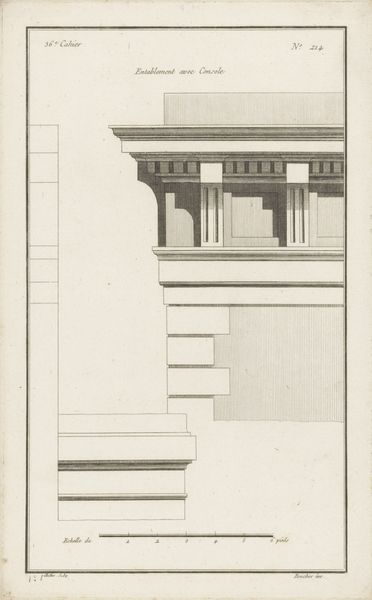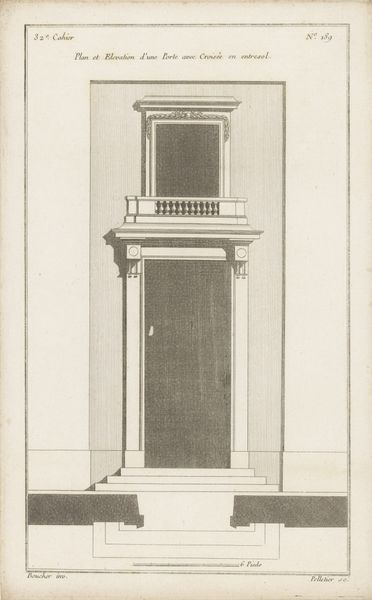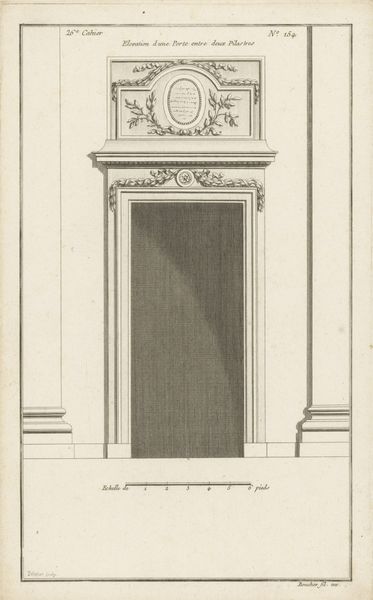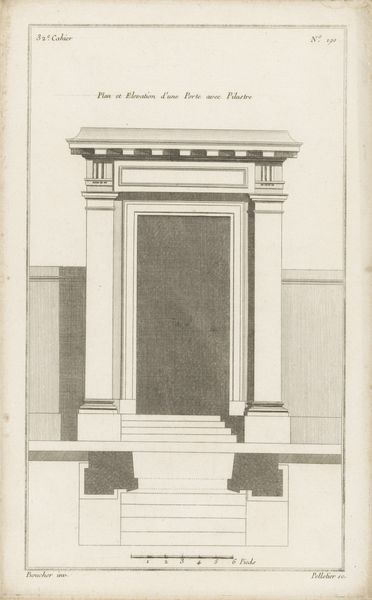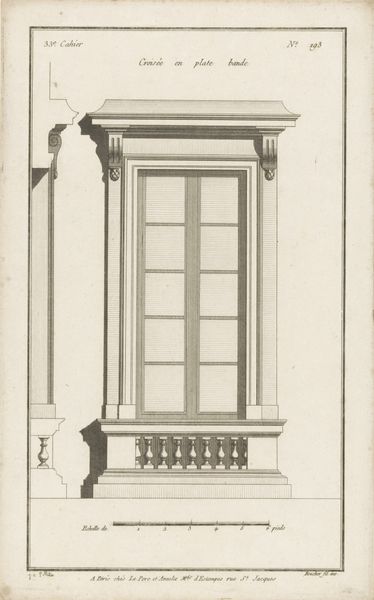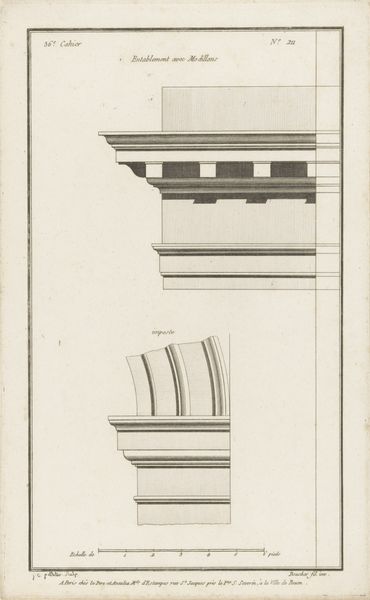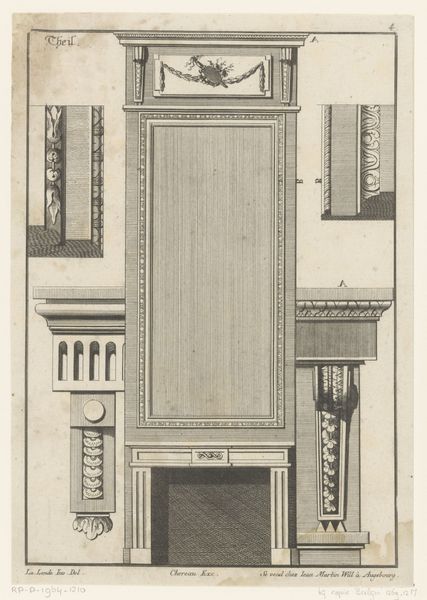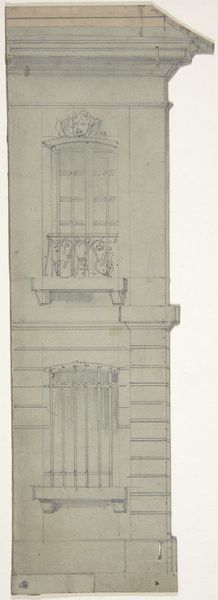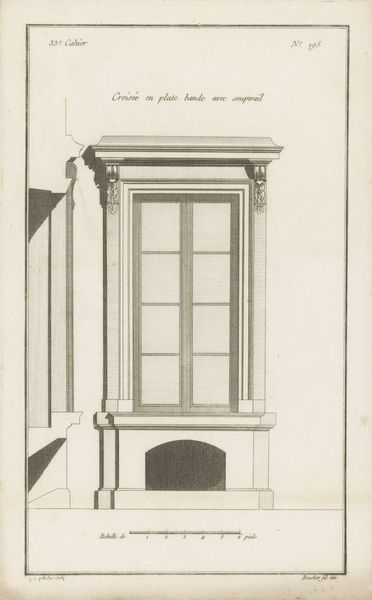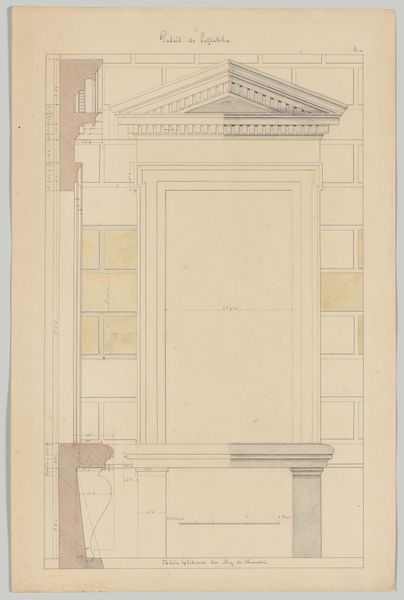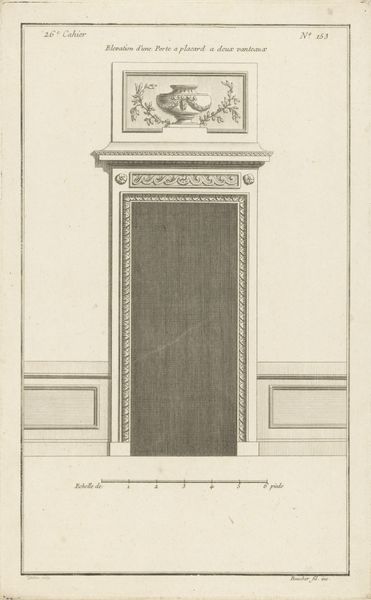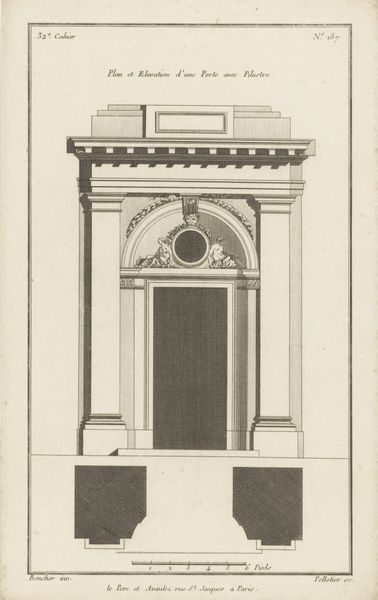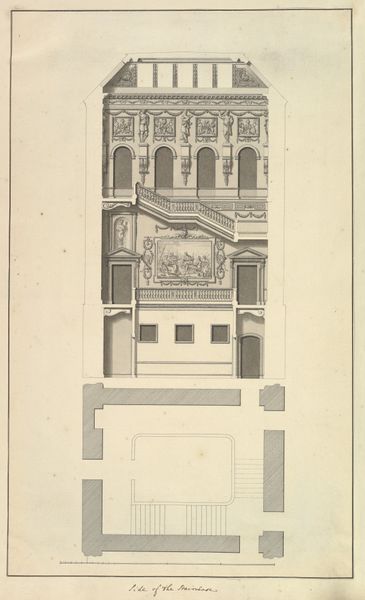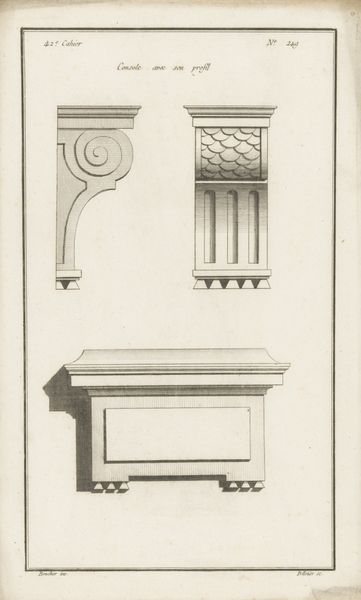
drawing, paper, ink, engraving, architecture
#
drawing
#
neoclacissism
#
paper
#
form
#
ink
#
geometric
#
line
#
history-painting
#
academic-art
#
engraving
#
architecture
Dimensions: height 329 mm, width 205 mm
Copyright: Rijks Museum: Open Domain
Curator: This line drawing, “Hoofdgestel met console,” by Jean Pelletier, created between 1772 and 1779, presents an elevation of a classical architectural element. It’s currently held in the collection of the Rijksmuseum. Editor: It's quite stark, isn’t it? The geometry and fine lines give it an almost blueprint-like quality. There’s something unsettling about the lack of color and depth – it feels less like a building and more like an equation. Curator: I find its sparseness really compelling! The drawing exemplifies the Neoclassical fascination with rationality and order following the flamboyant Rococo era. The precise ink strokes emphasize control and adherence to academic artistic principles of the time. This embodies an effort to revive the aesthetic and, perhaps, the ethics of antiquity during an age of growing social and political upheaval. Editor: The drawing seems to focus on labor, too. Consider the manual work involved in meticulously creating this elevation with just ink on paper. And the drawing’s function? As a model or guide, it informs future physical labor. It speaks to the value placed on design and the intent to materialize the intangible. The unadorned nature emphasizes function over excess. Curator: Precisely! There’s a power dynamic embedded in the visual language itself. We should acknowledge how classical architecture was largely implemented in state and civic buildings – legitimizing those in power through a constructed aesthetic lineage. Even these ornamental elements speak to specific cultural codes accessible mostly to elites. Editor: True, yet by breaking down architectural elements into drawings, knowledge also is disseminated more democratically. Thinking about materials here beyond the paper and ink itself – we're talking about potential for actual stone, brick, mortar—the stuff of social infrastructure. Curator: Right! While celebrating the supposed democratic legacy of antiquity, we also need to critically assess who could truly access and shape that world. Ultimately, how can the architectural canon and this drawing's role in it contribute towards social equity today? Editor: Food for thought. It transforms this seemingly austere drawing into a layered engagement with design, labor, and power. I can walk away contemplating the real human cost and implications, literally from the ground up. Curator: And for me, a valuable reminder of how aesthetic preferences reflect deeply held, sometimes unexamined, societal values we should all reckon with.
Comments
No comments
Be the first to comment and join the conversation on the ultimate creative platform.
